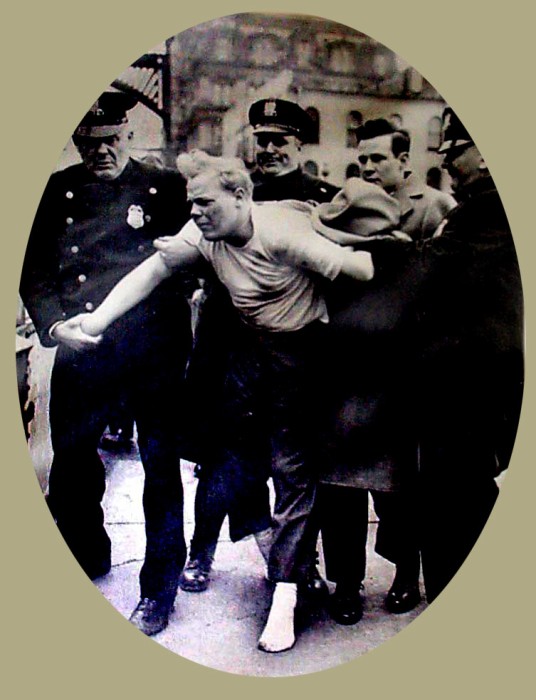|
Click on the
thumbnail
|
|
|

|
A common generic was the star with
simply "Police" stamped into the face. This was an inexpensive
way for small towns to "badge" their officers, oftentimes for
less than fifty cents. |
|
|
 |
The octagon shield was more common in
the east, but often contained much scrollwork for that
"sophisticated" look. |
|
|
 |
This small circle is stamped with flower-like adornment above and below
"Police". It has an interesting coin-like ticking around
the outer edge.
|
|
|
 |
The shell back of the above badge. Note the small strip of metal
holding the pin as a saddle.
|
|
|
 |
One of the most beautiful generics is the oval, with it's ornamental
stamping above and below "Police". Hallmarked by an
1880s Boston manufacturer.
|
|
|
 |
This Sergeant's badge is a little more "modern" than other
generics, probably circa 1930s.
|
|
|
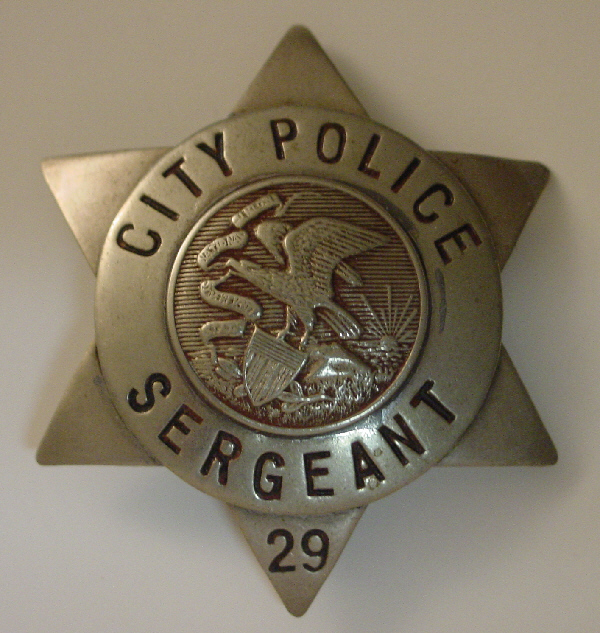 |
Another more "modern" generic, probably circa 1940s, carries
an Illinois seal.
|
|
|
 |
This crude star is awesome in its simplicity and boldness. Stamped
by a Cincinnati badge maker.
|
|
|
 |
This detective's generic not only
contained a bit of scrollwork, but the rank was emblazoned diagonally
across the face. |
|
|
 |
This six-point ball-tipped detective star has a wire pin on the back
held in place with a round saddle.
|
|
|
 |
Small town constables also wore
generics, like this simple round "plain-jane". Sometimes, the
simplicity of these badges is the beauty in them.
|
|
|
 |
A filigree-adorned Constable's shield, probably circa 1880s
|
|
|
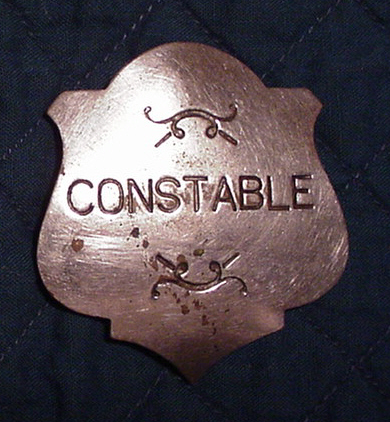 |
This generic Constable's badge is
hand-etched on the back "1893 B'ville , OK, IT". The
"IT" is for "Indian Territory". The B'ville is for
Bartlesville. |
|
|
 |
This Deputy Sheriff star measures about 2.5 inches with stamped
ball-tips.
|
|
|
 |
This tiny star measures about 1 inch and is loaded with
ornamentation. The ball-tips look huge on it but are regular size.
|
|
|
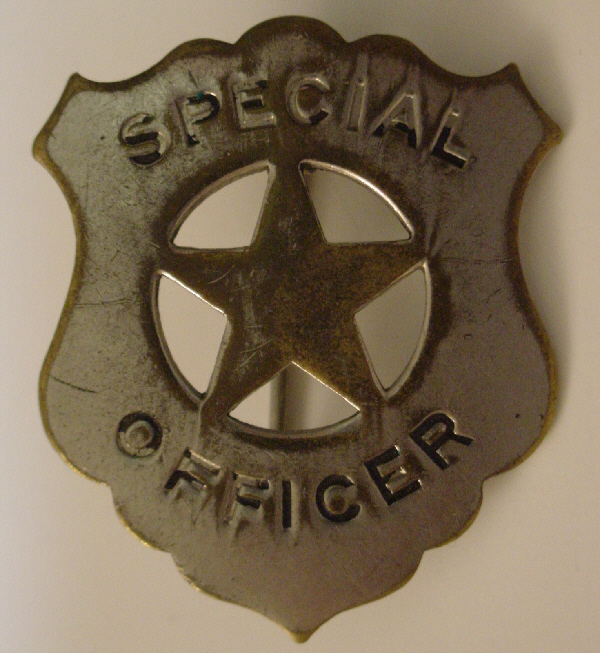 |
More often than not, small towns opted
to give their part-time, or special occasion officers generics. This
shield includes a cut-out 5 point star. |
|
|
 |
Another common generic style is the
oval, as seen in this special's badge. |
|
|
 |
Another typical style for generics, the
circle star cut-out. This one for "Special Police". |
|
|
 |
Six-point star with stamped ball-tips.
|
|
|
 |
Yet another ball-tipped star, this one had filigree in the center.
This star was made by WS Darley, Melrose Park, Illinois.
|
|
|
 |
This generic probably dates to the 1940-50s, a "cheap way" to pin
a badge on a special officer.
|
|
|
 |
This "button badge" was probably a cheaper way to deputize many
citizens for a special event or possibly during war time when metal was
scarce.
|
|
|
 |
This style is known as the "Radiator badge", common in the
Northeast. It carries the hallmark "Boston Badge Co."
|
|
|
 |
The common pinched shield in Special Police title.
|
|
|
 |
Another pinched shield but with the cut-out five-point star
|
|
|
 |
A five-point, plain-armed star.
|
|
|
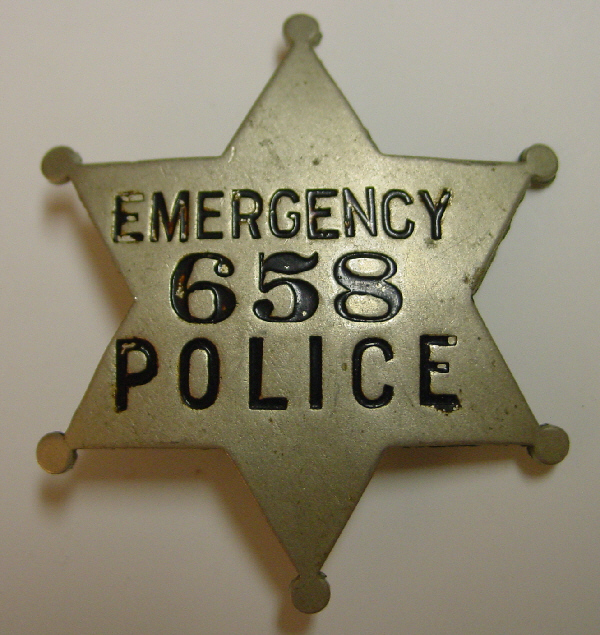 |
Something big must've been happening
when this unknown department decided to order up a bunch of
"Emergency Police" badges. The badge maker was probably
rushed, which is why he couldn't even center the wording properly.
Surprising that, even though this badge was ordered with a number, the
town or city didn't put its name on it. |
|
|
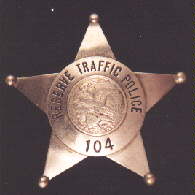 |
A more recent (probably 1950's)
generic, this unknown Illinois agency supplied its reserve traffic officers with
this 5 point star. With the presence of the State Seal, can this truly
be classified as a generic? Depends on who makes up the rules I guess. |
|
|
 |
This Town Deputy Forest Warden badge carries a Boston
makers mark. |
|
|
 |
This Deputy Game Warden's six point star with ball-tips
includes a Sachs-Lawlor hallmark. |
|
|
|
|
 |
This junior police badge was probably made in the 1910s-1920s and has a
very unique saddle pin.
|
|
|
|
Note: Be careful when acquiring
generics. There are many, many fakes out there. |
